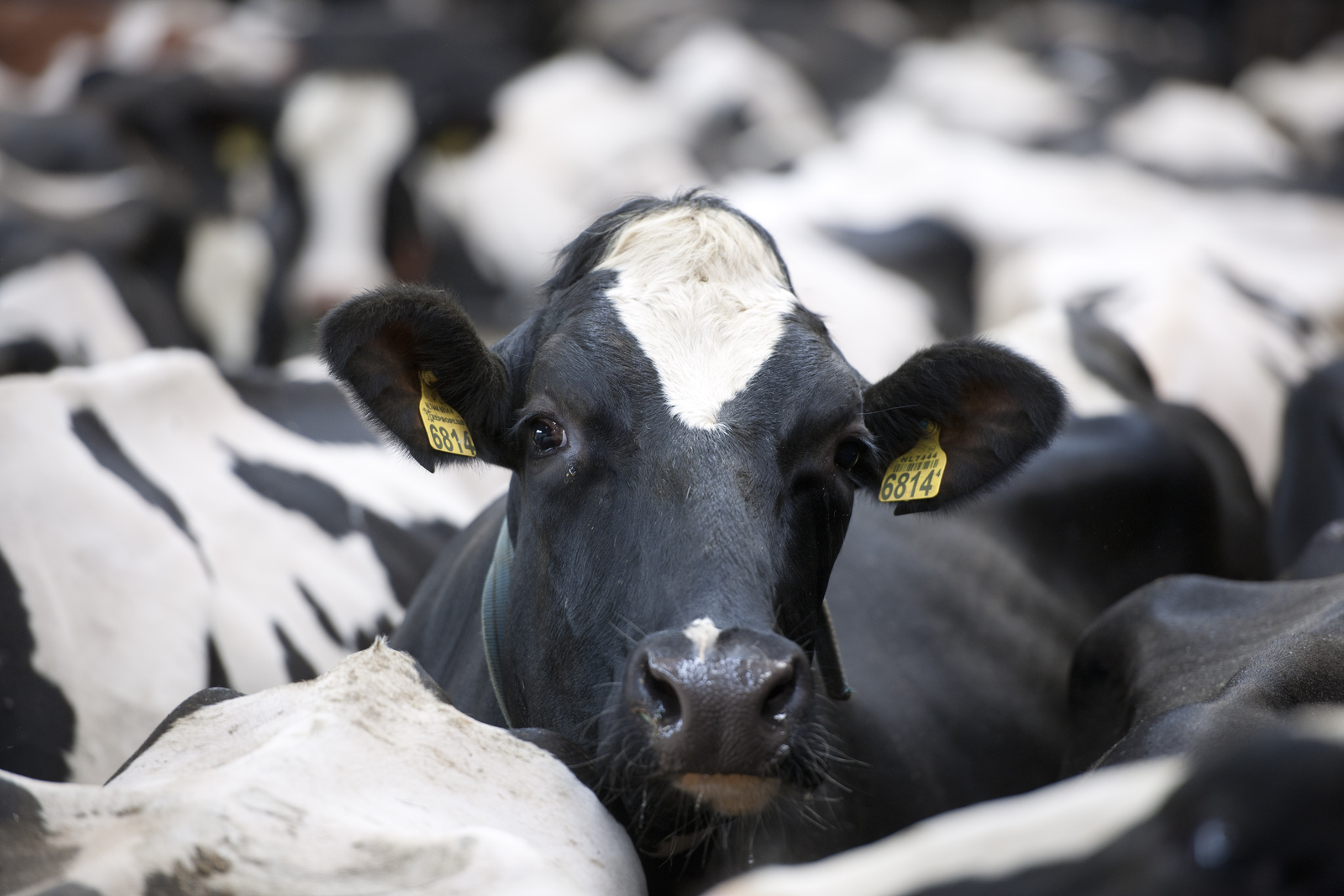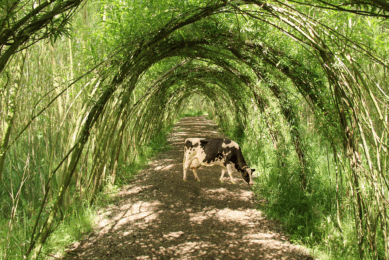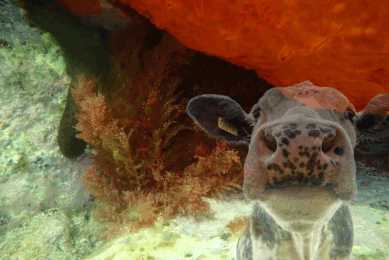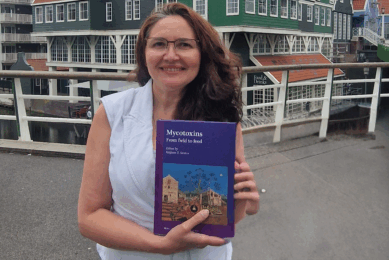Mycotoxin risk and control in a dairy herd

The dairy cow’s diet is composed of many materials – what is the mycotoxin risk in this diet and which materials are most at risk? Furthermore, what should be done to detect mycotoxins and protect the herd?
In order to better understand the mycotoxin risk in a dairy cow’s diet, the results of LC MS/MS analysis by Labocea, a French public lab (Accreditation COFRAC 1-0632) were reviewed between January 2013 and March 2015. The Labocea database contains a total of 3,255 raw materials mainly from France and Europe (Figure 1). Feed samples sent to Labocea, however, are not always randomly selected as some of the samples are selected because they represent a high risk. Nevertheless, the high number of samples allows to better understand the profile of contamination of the dairy cow’s diet.
Fusarium growth
Total mixed rations (TMR) are mainly composed of forages to satisfy rumen requirements and are supplemented with a lower quantity of grains to provide energy for milk production. In the field, plants are naturally in contact with various fungi, the most frequent being Fusarium. Fusarium growth depends on many factors such as: moisture levels (22-25% humidity in the plant), temperature (>15°C), cultivation methods like no-till farming and short crop rotation (Gourdain et al., 2008). Field application of fungicides is a tool to limit the development of fungi in field but not always feasible, for example, on the corn plant due to the height of the plants. The fungi itself is not a threat to the animal, but in stress conditions Fusarium produce mycotoxins like Trichothecenes (DON), Zearalenone and Fumonisins. Mycotoxins occurrence and concentration in plants are variable from year to year because of the annual variation in weather conditions and plant stress factors known to affect mycotoxin formation (Coulumbe, 1993).
As shown in Figure 2, TMR is often contaminated by various mycotoxins from Fusarium. These mycotoxins mainly come from corn silage, compared to grass forages that are less at risk. These results are comparable with the data from Withlow, 1998 and Oldenburg and Höppner, 2003. Corn is known to be particularly at risk in terms of mycotoxin contamination (SCOOP 2004) because of difficulties to apply fungicides and favourable cultivation methods for mould development. In 2011, Eckard et al. measured the specificity in colonisation of different Fusarium species and concluded that Fusarium develops more on rachis (stalk and husks) than on kernel; this can explain why corn silage can often be affected by the Fusarium toxins, as the full plant is harvested. In addition, under poor storage conditions, mould can develop in the core of the silo, particularly if silage is exposed to air (eg: drier silages do not pack well; Muck, 1988) leading to higher risk of mycotoxin contamination. Last but not least, corn silage intake can be very high in certain areas, leading to a much higher risk of contamination in the TMR.
Mycotoxins and ruminants
For a long time it was accepted that rumen microbes can detoxify mycotoxins. In some studies with dairy cows, scientist stated that the capacity for mycotoxin detoxification in the dairy cow rumen is lower than believed. Heinz-Kiessling showed that the efficacy of detoxification is not the same for all mycotoxins. DAS, T2, ochratoxin and zearalenone are partially converted, whereas in this study no degradation was noticed for DON and aflatoxin B1. Other studies measured a partial degradation of DON into DOM-1, a less toxic form (Prelusky et al., 1987 and Coté et al., 1986). Heinz-Kiessling also showed that the decrease of zearalenone was the result of a reduction to zearalenol, and mostly (90%) to a-zearalenol, which is three to four times more oestrogenic than the parent compound. Fumonisins are not altered in the rumen (Pfohl et al., 1999). Heinz-Kiessling proved that protozoa are invariably more active than bacteria in the detoxification process, but they are also more sensitive to mycotoxins than bacteria (Westlake et al., 1989). As a consequence, dairy cows are less resistant to mycotoxins and can be greatly affected by mycotoxin contamination. Under conditions of acidosis, even at subclinical levels, cows are even more vulnerable as their protozoa population is affected and not able to detoxify mycotoxins.

Mycotoxins exert their effects through three primary mechanisms in dairy cattle: immunodepression (Koroteleva et al., 2009), reduction in intestinal nutrient absorption due to lower feed intake – but mainly by irritation of the digestive tract (reduction in villi height; Pinton et al., 2012), and alteration of reproductive performance due to its estrogenic effects of zearalenone and to the lower amount of nutrient absorption (Klang et al., 1978). These three primary mechanisms, even with low level of mycotoxins, provoke pathologies that are common and can be due to other symptoms such as decreased performance, lower body condition, liquid faeces, increased somatic cells and mastitis, lameness, etc…so it is likely that farmers and technicians don’t think about mycotoxins as a primary cause of the problems.
How to protect cows from mycotoxins
In order to help detect mycotoxin contaminations, Olmix has developed a methodology of diagnosis. As a starting point, the company recommends to use a predictive model of mycotoxin risk for dairy cows that is available for free online (www.olmix.com/evaluator). This predictive model will identify the risk factors in the farm and calculate the probability of having high levels of mycotoxins in the dairy cow’s diet. If the predictive model calculates a high risk of having mycotoxins, Olmix recommends to run an analysis (by chromatography or immunoaffinity) in order to confirm the mycotoxin contamination and quantitatively measure the level of contamination in the dairy cow’s diet. Once the contamination is confirmed and measured, the use of a mycotoxin binder in the cow’s diet, in combination with optimum farm management practices, is the best possible method to reduce the mycotoxin impact. The choice of a wide spectrum binder is a key factor to sustainably protect the animals from mycotoxins. This is because feed samples are often contaminated with more than one mycotoxins. As stated earlier, this should always be done in combination with good management, ranging from quality control of the feed, proper storage and hygiene.











